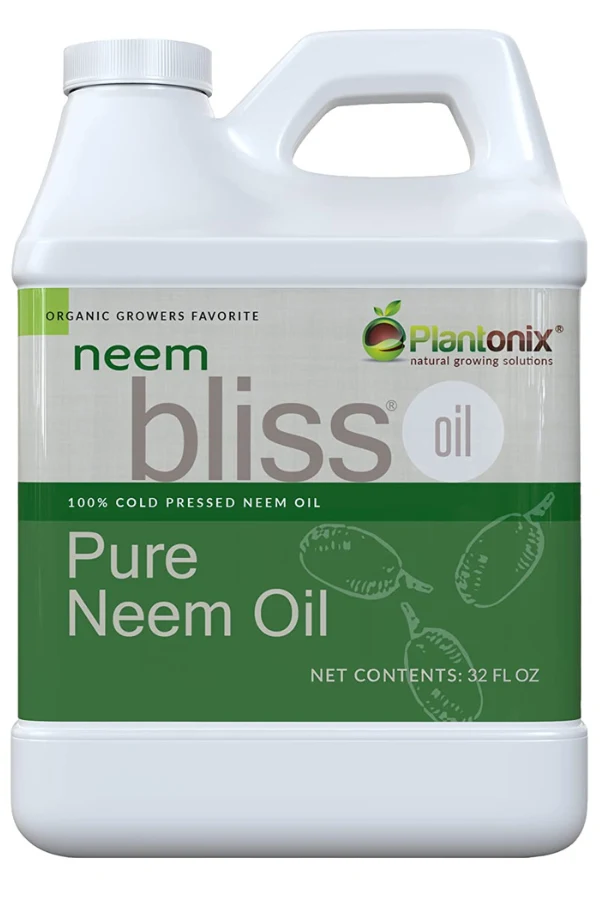If you are looking for a safer, all-natural way to control pests organically on your plants – you need to try using neem oil this year!
Neem oil has actually been used for hundreds of years for controlling all kinds of pests and fungal diseases. Not just on plants, but trees, shrubs and lawns as well. In fact, up until the mid 1900’s, when synthetic pesticides started to become easily and inexpensively available, neem oil was the go-to product for everything from insect control to preventing scab and other fungal diseases on fruit trees.
But today, as more and more gardeners begin to once again embrace organic growing, neem oil is becoming quite popular once again. And it’s easy to see why!
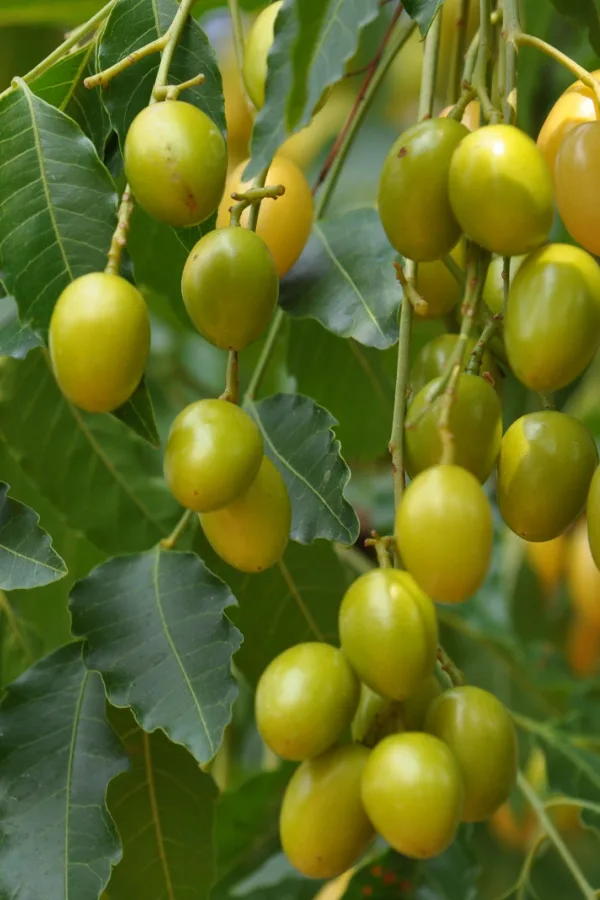
So exactly what is this all-purpose organic oil? Neem oil is the oil that comes from pressing the seeds of a neem tree. The tree, which is quite common in India and Africa, has some incredibly natural powers when it comes to dealing with a wide range of plant issues.
When used correctly, neem oil is effective at controlling all stages of an insect’s lifecycle. From eggs to larvae to the adult stages, neem oil can work its magic. At the same time, it can be safe for pollinators like butterflies, birds, and bees – and safe for you and your pets, too!
With that in mind, here is an in-depth look at how neem oil works, along with some of the best ways to use it to keep your plants safe.
How Neem Oil Works – How To Use Neem Oil On Plants For Organic Pest Control
Neem oil works against pests by interfering with all stages of an insect’s life cycle. It contains a natural chemical compound that can kill many insects on contact. That same compounds can also cause issues with an insects reproduction cycles. Last but not least, it also interferes with an insects ability to eat.
On the fungal side of things, neem oil contains properties that help to protect plant tissue. These properties can prevent leaf spot, mildew, rust, blight, and scab. All, of course, which can be devastating to a wide variety of plants and trees.
Neem oil is most often used as a foliar spray and applied to the leaves of plants. You can also use it directly on the soil to help deal with soil dwelling pests and disease.
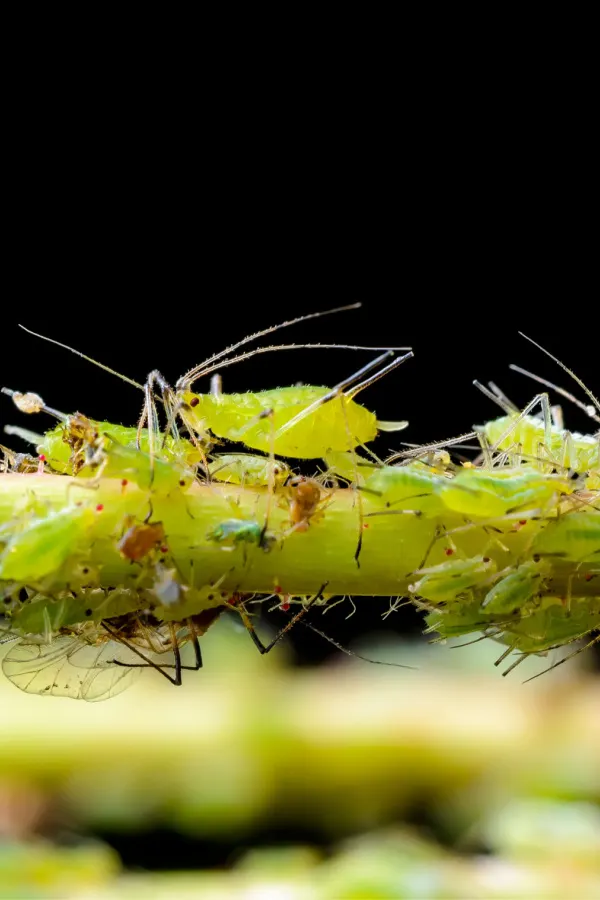
When used as a foliar spray, it helps to not only prevent fungal diseases but also many common insects. In fact, neem oil can help to control over 200 different kinds of pests – including aphids, spider mites, whiteflies, and mealybugs.
The spray is also highly effective in controlling Japanese beetles, nematodes, thrips, grubs, and leaf hoppers. Even better it can be used for indoor houseplants as well – which can be quite helpful since it is organic and safe to use around pets and humans.
The Plants Neem Oil Can Help – How To Use Neem Oil On Plants
Any and all annuals, perennials, and vegetable plants can benefit from the use of neem oil. Fruit trees and your lawn can also benefit greatly from neem oil. For fruit trees, spraying in the early spring before they leaf out can help prevent rust leaf spot, scab, leaf spot, and many other different fungal problems.
Since spraying occurs while trees are dormant, there is little worry of harming beneficial insects. The spray can also help clear insects from fruit trees once they leaf out and produce as well.
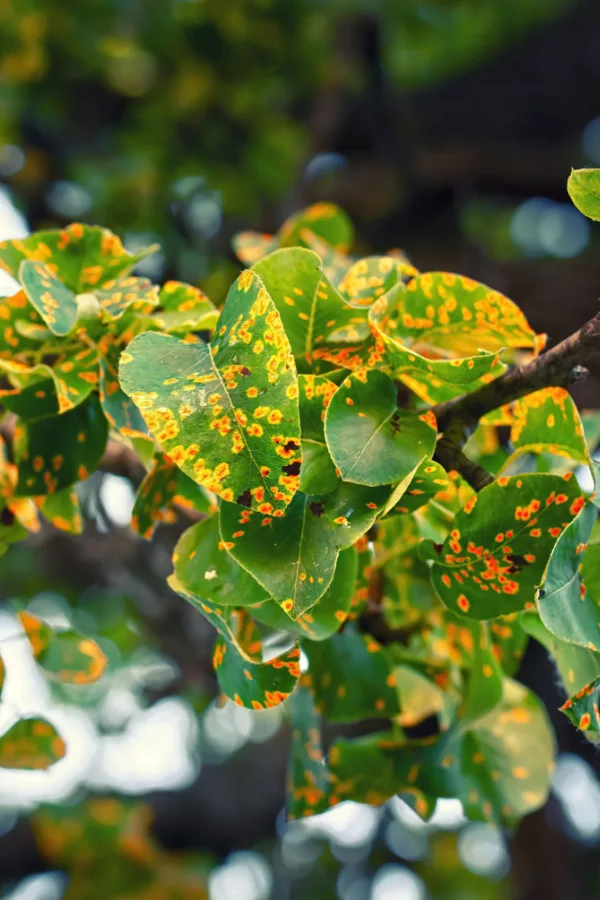
For use in your lawn, neem oil can be applied at the soil level to help control or eliminate soil-bound insects like grub worms and nematodes. Grub worms are a favorite of ground moles, so helping to eliminate the grubs will also help to eliminate moles as well.
How To Use Neem Oil For Plants
While there are many different man-made insecticides and pesticides available on the market today, most aren’t safe to use around humans and pets. In addition, most are harmful to all insects – including pollinators.
That’s where neem oil can really come into play. When used correctly, it will not hurt pollinators and is also safe to use around pets and humans. It is also safe for earthworms, birds, and other mammals as well. Because these types of insects and animals do not consume plant tissue, they do not consume the oil either.
The key is to use it correctly and to aim for applying it when pollinators aren’t around. This keeps them from coming into direct contact with the oil. It is best to use neem oil early in the morning or late at night. This is when pollinators are far less likely to be out working plants. By applying it at these times, the oil has time to dry and not come in direct contact with beneficial insects.
Purchasing The Right Kind Of Oil
Neem oil comes in many different forms and combinations, so how you apply and use the product will depend a little on which type you purchase.
There are even ready-to-go neem oil products that don’t need any additional ingredients or steps in order to work. You can find ready-to-go products in spray bottles for immediate use, but they typically cost a bit more than concentrate forms that you mix yourself.
When selecting neem oil to make your own liquid for spraying, always use 100% pure neem oil with no fillers. Quite often, the fillers in some lesser quality neem oils do not work nearly as well against pests or fungal issues.
Making & Applying The Oil
To use concentrated neem oil, you only need three basic ingredients: Pure neem oil, water, and a few drops of dish soap. The dish soap helps the oil disperse and cling to the plant’s foliage. (Product Link: Neem Bliss 100% Cold Pressed Neem Oil)
It is best to apply neem oil in any form when plants or foliage are dry and there is little wind. It also works best in temperatures above the 40º Fahrenheit mark.
Typically, you will need to mix about one ounce of neem oil for every gallon of water for concentrated solutions. This amount may vary depending on the type of pest you are wanting to eliminate or the plants involved. Add in a few drops of dish soap and mix well. Always read labels for specific product instructions.
A handheld sprayer works well for indoor plants as well as garden spaces. For larger areas like lawns or for spraying dormant trees, consider using a backpack sprayer. This is also helpful when using the product as a soil drench. (Product Link: Field King 4 Gallon Backpack Sprayer)
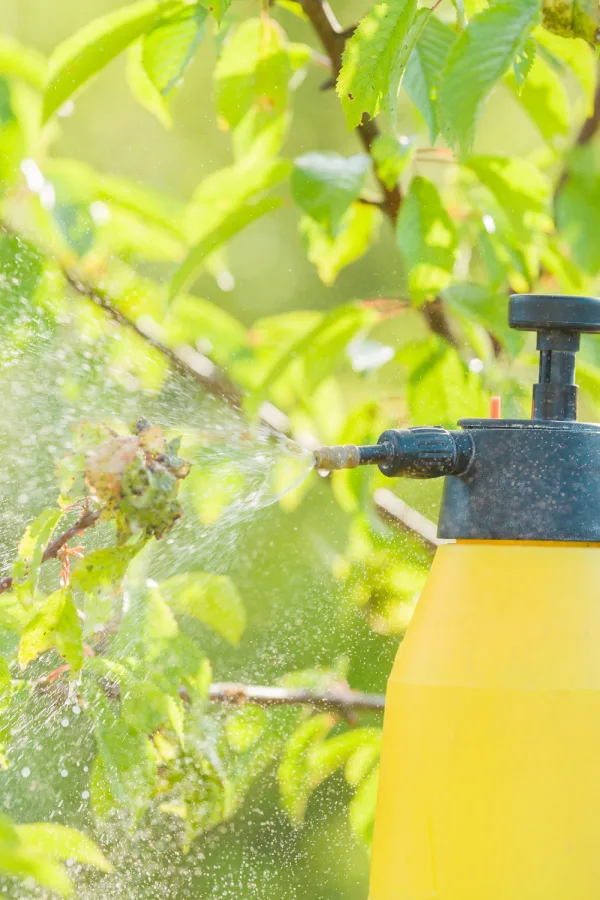
Be sure to spray all sides of a plant’s foliage, including underneath the leaves. Some pests like aphids live underneath leaves, so a complete soaking is required. For soil drenches, apply when watering to help roots quickly absorb the oil and direct it throughout the plant’s tissues. Follow the instructions on the package for safe and proper results.
Applications By Plant Type – Using Neem Oil For Plants
Vegetables, Annuals & Perennials: Apply early in the morning when plants are dry. A foliar spray is most often used to help kill pests as well as fungal diseases. Avoid using when plants are blooming if possible to help avoid harming beneficial insects. Wash any produce prior to consumption. Reapply every one to two weeks or after heavy rains.
Fruit Trees: Use when trees are dormant for best results. This helps to kill overwintering larvae and eggs as well as prevent fungal diseases. You can also apply during the growing season to help with infestations for organic pest control.
Lawns: Use as a spray in the spring to help eliminate early stages of pests as well as fungal diseases. Some pests like Japanese beetles start out their lifecycle as grubs and are more easily controlled at the grub stages as opposed to adult stages, so early application is key.
Houseplants: Apply as a soil drench or foliar spray every week or so until there are no more signs of pests. To help prevent future infestations on house plant soil, use a soil drench every 3 to 4 weeks.
When used correctly, neem oil is an excellent all-natural, organic solution for pest control and fungal issues that can occur with your plants and trees!

Follow Our Facebook Page For Even More Great Tips! Simple Garden Life Facebook Page
Simple Garden Life is a website dedicated to keeping gardening fun, simple and enjoyable! We publish two new articles each week along with a new garden podcast episode every two weeks. This article may contain affiliate links.

